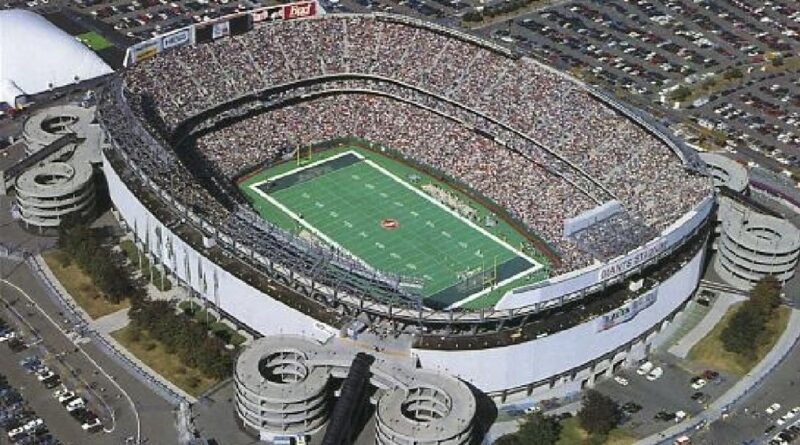50 Years On: The Mysterious Disappearance of Jimmy Hoffa
Half a century has passed since Jimmy Hoffa, the ex-head of the Teamsters, inexplicably disappeared from a Detroit parking lot. His tale holds a particular resonance in New Jersey, despite his vanishing over 600 miles away. The Garden State has consistently pulled investigators into its mystery web due to the number of tenacious leads hinting at its involvement. Searches have spanned picturesque marshlands bordering the turnpike, the ominous depths beneath the Pulaski Skyway, and the eerie underworld of Giants Stadium.
Hoffa was 62 when he vanished on the sunny afternoon of July 30, 1975. As per public FBI case files, that afternoon Hoffa bid adieu to his home by Lake Orion, Michigan, shortly past one and headed towards the Machus Red Fox eatery in Bloomfield Township, situated on the outskirts of Detroit.
The aim of his restaurant visit was a pre-scheduled meeting with two notorious figures. The first was Anthony ‘Tony Pro’ Provenzano, a Union City Teamsters official known for his mob connections. The second associate was Anthony ‘Tony Jack’ Giacalone, identified prominently as a Detroit underworld enforcer.
In what seemed to be an impromptu twist of events, Hoffa found himself alone. Subsequently, at around quarter past two that afternoon, he phoned his wife from a nearby payphone to voice his frustration when neither of the Anthonys had shown up. Little did she know that this call would be the last trace of Hoffa.
Following Hoffa’s abrupt disappearance, federal grand juries were summoned, instigating an exhaustive investigation. For the following decades, the FBI detectives pursued possible leads across various states, including the sun-soaked sandy beaches of Florida and the chilly landscapes of Michigan. Their research led them to upheaval backyards, horse farms, driveways and fields in their quest for the truth.
By the mid-1980s, more than 70 volumes of case files had been meticulously collated by the investigators. Yet, even after 50 years, no physical evidence— especially Hoffa’s body— has been uncovered. No potential suspects have ever been prosecuted, and even as decades pass, the case continues to be worked on actively.
Provenzano, for his part, was a former vice president of Teamsters Local 560 and was known to operate in and around Hudson County. Before the mid-1970s, he and Hoffa shared a close relationship. However, when Hoffa attempted a comeback into power following a stint in jail for bribery and jury tampering, Provenzano broke ties. The ill-fated meeting in 1975 is believed to be a part of the ensuing power struggle.
Provenzano, later in his life, was condemned and imprisoned for unrelated cases of extortion and murder, dying in captivity in 1988. Due to his close connection to Provenzano, early conjectures linked Hoffa’s disappearance to the mob in New Jersey.
In the aftermath of Hoffa’s disappearance, a tip-off came from a federal informant, Ralph Picardo. He suggested that Hoffa’s body was enclosed in a 55-gallon drum and taken to New Jersey in a truck. The directive was allegedly from Provenzano himself. The FBI diligently followed the lead, but it was years before any potential burial site was earmarked.
In 1989, a spotlight was cast over East Rutherford, piquing public interest. A self-proclaimed hired assassin claimed that Hoffa’s resting place was within the concrete foundations of the Giants Stadium. Despite their best efforts, the FBI unearthed no evidence to affirm this assertion. Yet his name has not ceased to surface in relation to the demolished stadium site, even as of 2010.
Another revelation arose in 2006 from Richard ‘The Iceman’ Kuklinski, a nefarious contract killer from New Jersey responsible for numerous cold-case murders. In a posthumously released memoir, he claimed that he was commissioned for $40,000 to execute Hoffa. Kuklinski detailed how he disposed of the body in a car which was later compacted and sent to Japan. These claims remain unverified.
Adding a new chapter to the Hoffa mystery, in late 2021, federal detectives returned to New Jersey armed with tools capable of ground penetration. Their attention was captured by a thin expanse of soil tucked away beneath Pulaski Skyway in Jersey City. The site was near a closed landfill, notorious for illegal waste disposal and enduring underground fires.
This recent pursuit was triggered by a confession from Frank Cappola. He claimed his father verified that Hoffa was deposited in a steel drum at that particular site in 1975. The burial, according to him, was ordered by anonymous figures and executed stealthily within the landfill boundary.
Hoffa was declared officially deceased in 1982, though his body was never discovered. That same year, an old accomplice conveyed to a Senate committee that Hoffa had been dismembered, dispatched to Florida before being cast into a swamp. Nevertheless, he left an indelible imprint on American labor history and his disappearance fuels endless theories with many roads leading back to New Jersey.



